 Ogcocephalidae is the official term for a bat fish. Typically, bat fish dwell on the bottom of the ocean floor. So this was a rare find indeed. They are found in deep, lightless waters of the Atlantic, Indian and western Pacific Oceans. They are laterally compressed fishes similar in appearance to rays, with a large circular, triangular, or box-shaped head and a small tail. The largest members of the family are about 50 centimeters (20 in) in length. They are bottom-dwelling fishes, mostly found on the continental slope at depths between 200 meters(660 ft) and 1,000 meters (3,300 ft). This fish typically lives in water depths, where a person like you and I, would never see them. SO TO FIND THIS FISH OFF THE DOCK WHERE I LIVE, IS A RARE FIND INDEED! When I am not with my tutor, homeschooling, you will find me in and around the dock looking for interesting stuff. What I really like about Belize, is that all the animals here, are truly unique and different. I love seeing them, and reading about them. Below are some pictures of bat fishes, for you to enjoy You can see Scuba diving with them, which is rare. This is your new blog post. Click here and start typing, or drag in elements from the top bar.
1 Comment
 This was an amazing find off the dock today. When I brought it out of the water, a crowd gathered at the beach, to see what I had caught. I wanted to show everyone what a Caribbean Reef Octopus looks like. The Caribbean Reef Octopus is a coral reef marine animal. It has eight long arms that vary in length and diameter. The "body" is large and chunky in comparison (up to 60 cm long). The Caribbean Reef Octopus is difficult to describe because it changes color and texture in order to blend into its surroundings, using specialised skin cells known as chromatophores. Its color range is incredibly large; it can change from crismson to green, bumpy to smooth. It weighs around 3.3 lb or 1.5 kg. The Caribbean Reef Octopus lives in warm waters around coral reef environments, with grassy and rocky sea beds. The Caribbean Reef Octopus lives in hidden, rocky lairs that are difficult to locate. Their lairs are usually created in shallow warm waters. The Caribbean Reef Octopus is not a social animal and does not interact with other Octopus briareus unless mating. If one Octopus was to go into any other Octopuses lair there would be an inevitable fight. Caribbean Reef Octopuses are usually safe from invoking fights if they stay 60 feet away from other octopuses at all times. If faced with a predator a Caribbean Reef Octopus, like most other octopuses, would suck up a volume of water then expel it quickly in the form of a jet to propel itself away from the foe. To further deter predators the Caribbean Reef Octopus can eject oil to mask its escape. The Caribbean Reef Octopus does not live in its lair for its entire life, instead it moves often except while caring for young/eggs. The Caribbean Reef Octopus feeds on crabs, shrimp, lobsters, and a variety of fish. The Caribbean Reef Octopus is a nocturnal species and only hunts at night.  Needlefish, you will find them in abundance in and around docks in San Pedro. Many fisherman, cast their nets off the docks and gather large quantities of these fish for bait in catching much larger fish. In looking at the shape and size, it is easy to see why they are called "Needlefish". Needlefish are piscivorous fishes primarily associated with very shallow marine habitats or the surface of the open sea. Needlefish closely resemble North American freshwater gars in being elongate and having long, narrow jaws filled with sharp teeth, and some species of needlefish are referred to as gars or garfish despite being only distantly related to the true gars. Needlefish are slender fish ranging from 3 centimeters to 95 centimeters in length. They have a single dorsal fine, placed far back on the body, almost opposite to the anal fin. Their most distinctive feature is their long narrow beak, which bears multiple sharp teeth. In most species, the upper jaw only reaches its full length in adulthood, so that the juveniles have a half-beak appearance, with an elongate lower jaw, but a much smaller upper one. During this stage of their life cycle, they eat planton, switching to fish once the beak fully develops. All needlefish feed primarily on smaller fishes, which they catch with a sideways sweep of the head. In addition some species will also take planton, swimming crustaceans, and small cephalopods. Needlefish are most common in the tropics but some inhabit temperate waters as well, particularly during the summer months. Needlefish, like all ray-finned, are capable of making short jumps out of the water at up to 38 miles per hour. Since needlefish swim near the surface, they often leap over the decks of shallow boats rather than going around. This jumping activity is greatly excited by artificial light at night; night fisherman and divers in areas across the Pacific Ocean have been "attacked" by schools of suddenly excited needlefish diving across the water towards the light source at high speed.  I was snorkeling around the dock the other day, and look what I found, a huge star fish. The names "starfish" and "sea star" essentially refer to members of the Class Asteroidea. However, common usage frequently finds "starfish" and "sea star", which are correctly referred to as "brittle stars" or "basket stars". There are 2,000 living species of starfish that occur in all the world's oceans, including the Atlantic, Pacific, Indian as well as in the Arctic and the Southern Ocean (i.e., Antarctic) regions. TEN FACTS ABOUT STAR FISH 1. Sea stars are not fish. 2. Sea stars are related to sand dollars, sea urchins, and sea cucumbers. 3. There are thousands of sea star species. 4. Not all sea stars have 5 arms. 5. Sea stars can regenerate a lost arm. 6. Sea stars are protected by armor. 7. Sea stars do not have blood. 8. Sea stars move on their tube feet. 9. Sea stars eat with their stomach inside-out. 10. Sea stars have eyes.  This was a giant Hermit Crab, that I found off the dock the other day. Just wanted to share. Most hermit crabs have long, spirally curved abdomens, which are soft. The vulnerable abdomen is protected from predators by a salvaged empty seashell carried by the hermit crab, into which its whole body can retract. Most hermit crabs will use the shells of sea snails (even hollow pieces of wood and stone) to occupy. The tip of the hermit crab's abdomen is adapted to clasp strongly onto the columella of the snail shell. As the hermit crab grows in size, it has to find a larger shell and abandon the previous one. This is often present vigorous competition among hermit crabs for shells. The availability of empty shells at any given place, depends on the relative abundance of gastropods and hermit crabs, matched for size. Hermit crabs that are kept together, may fight or kill a competitor to gain access to the shell they favor. However, if the crabs vary significantly in size, the occurrence of fights over empty shells will decrease or remain non-existent. Several hermit crab species, both terrestrial and marine, use "vacancy" chains” to find new shells: when a new, bigger shell becomes available, hermit crabs gather around it and form a kind of queue from largest to smallest. When the largest crab moves into the new shell, the second biggest crab moves into the newly vacated shell, thereby making its previous shell available to the third crab, and so on. A hermit crab with a shell that is too small cannot grow as fast as those with well-fitting shells, and is more likely to be eaten if it cannot retract completely into the shell.  I wanted to show you this green iguana. He's not something you typically will find in North America. I thought, he was kind of neat. They are found in Mexico, Central America and parts of South America. This is a full-grown iguana and is about 5 feet long (including the tail). In addition to it's green color, it has black stripes. Green iguanas, not surprisingly, are green in color, but can be found in many different shades ranging from bright green to a dull grayish green. Their skin is rough, with a set of pointy scales along their back. Green Iguanas have long fingers and claws to help them climb and grasp, like what you see here. Green Iguanas can hear and smell very well, and have superb vision. Their long tail is also quite sharp, and is snapped in the air as a defense mechanism. You can see here, Charlie, is not upset that I am holding him. A green iguana's skin is very water resistant, and tough to avoid cuts and scratches. The color of the skin, helps camouflage him within the foliage. If they need to escape quickly, they have been known to leap from trees into water, and swim do swim well. Both male and female Iguanas can store fat under their jaws and in their necks for times when there is not much food available. Iguanas live in tropical rain forest areas, like Belize. They can be found in lower altitudes in areas near water sources, such as river or streams. They spend most of their time high in the forest canopy, about 40-50 feet above the ground. Iguanas are diurnal, meaning that they are awake during the day. They are cold-blooded, which means they do not produce their own body heat. In other words, a green iguana is cold to the touch. To stay warm, iguanas bask in the sun, lying on warm rocks, as they soak up the sun's heat. Green iguanas tend to live alone, but you may see them in groups occasionally in good sunny basking spots. Iguanas lay eggs, about 50 at a time, in holes in the ground called burrows. After a female iguana lays her eggs, she will leave them and not return. When iguana babies hatch, they grow up without care from their parents. Green iguanas lay many eggs, but only 3-10 babies will actually survive. It takes about 7-10 weeks for an egg to hatch and 2 years for a baby to become an adult. Green iguanas are omnivorous, which means to all you kids, they tend to eat mostly plants, leaves and fruit. Sometimes green iguanas when they are young, will eat eggs, insects and small vertebrates. Tony Garel, at the Belize Zoo & Tropical Education Center, is working on a project to help conserve the iguanas and educate the local communities as to their importance in our environment. Tony has used captive breeding techniques to increase green iguana populations, and has released some of these iguanas into the wild. |
Trenton Turley
Hi, my name is Trenton S. Turley. I've been living in Belize now for 11 years. Hope you enjoy reading my many blog posts. I write about things, that are passionate to me.
SNAKES OF BELIZE!
Check out, my my current blog series on Snakes of Belize. Categories
All
Archives
April 2016
|
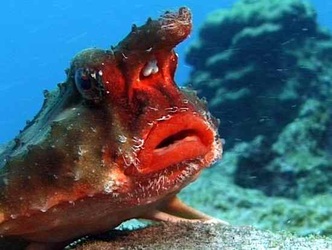
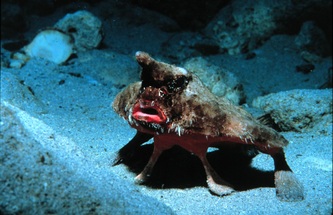







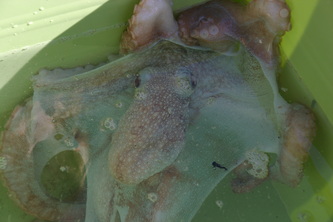



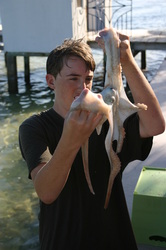



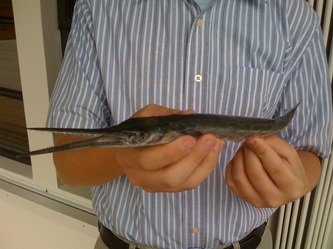


 RSS Feed
RSS Feed